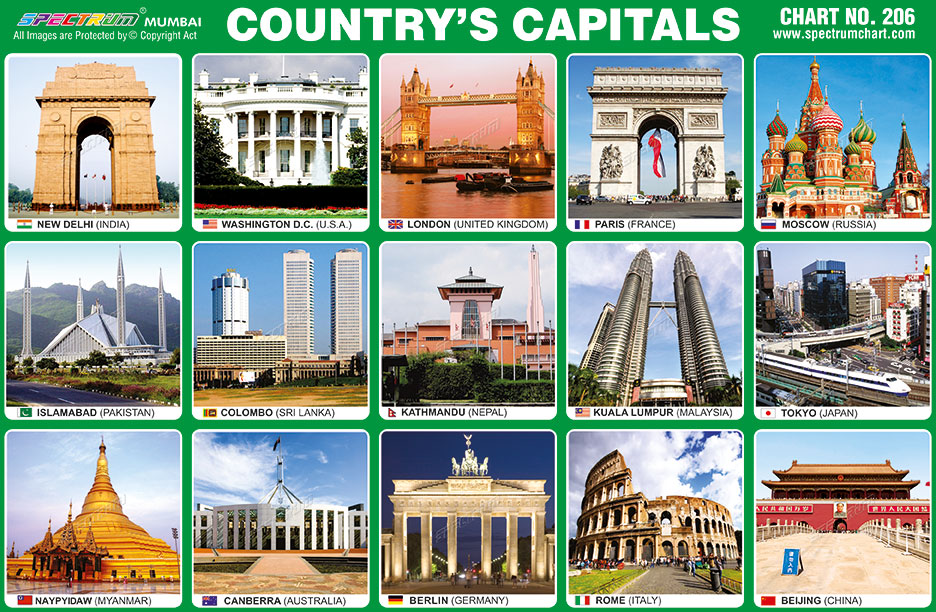The concept of countries with two capitals is both fascinating and complex, highlighting the rich diversity in governance and culture across the globe. Multiple capitals often arise from historical, political, or geographical reasons, leading to unique administrative setups that can sometimes baffle outsiders. In this article, we will delve into the reasons behind this phenomenon, explore the countries where this occurs, and discuss the implications for governance and citizens.
Understanding the dynamics of countries with two capitals not only enriches our knowledge of global politics but also sheds light on the cultural and historical narratives that shape these nations. From established democracies to emerging states, each country has its own story regarding why it operates with dual capitals. This article aims to provide an in-depth analysis, ensuring you have a comprehensive understanding of this intriguing topic.
As we navigate through the intricacies of dual capital cities, we will also look at the advantages and challenges associated with such an arrangement. By the end of this article, you will be well-equipped with knowledge about countries with two capitals and the factors contributing to this unique governance structure.
Table of Contents
- What Are Dual Capitals?
- Historical Background of Dual Capitals
- Countries with Two Capitals
- Case Study: Indonesia
- Advantages of Having Dual Capitals
- Challenges Faced by Countries with Two Capitals
- The Future of Countries with Two Capitals
- Conclusion
What Are Dual Capitals?
Countries with two capitals are those that have designated more than one city to serve as the seat of government. This arrangement can be due to a variety of reasons, including:
- Historical significance
- Geographical distribution
- Political strategy
- Cultural representation
Some nations have a primary capital where most government functions take place, while a secondary capital may serve specific purposes, such as housing certain ministries or hosting official ceremonies.
Historical Background of Dual Capitals
The practice of having two capitals is not a modern phenomenon; it dates back centuries. Many countries established dual capitals due to:
- Colonial influences
- Wars and territorial changes
- Economic development strategies
For example, in the case of South Africa, the country has three capitals: Pretoria (administrative), Cape Town (legislative), and Bloemfontein (judicial), a decision rooted in the historical context of governance and colonial rule.
Countries with Two Capitals
Several countries around the world operate with two capitals. Below is a list of notable examples:
- Benin: Porto-Novo (official) and Cotonou (de facto)
- Bolivia: Sucre (constitutional) and La Paz (seat of government)
- Malaysia: Kuala Lumpur (national capital) and Putrajaya (administrative capital)
- South Africa: Pretoria (administrative), Cape Town (legislative), and Bloemfontein (judicial)
- Swaziland (Eswatini): Mbabane (administrative) and Lobamba (legislative)
Case Study: Indonesia
Indonesia is a prime example of a country with two capitals, namely Jakarta and the newly designated capital, Nusantara. Below is a brief overview:
| Capital | Role | Location |
|---|---|---|
| Jakarta | Current capital | Java Island |
| Nusantara | Future capital | Borneo Island |
Jakarta has been the capital of Indonesia for decades, but due to overpopulation, pollution, and rising sea levels, the government has decided to relocate the capital to Nusantara, aiming for a more sustainable development model.
Advantages of Having Dual Capitals
Countries with two capitals can experience several benefits, including:
- Decentralization: Reduces pressure on a single city and promotes balanced regional development.
- Cultural representation: Allows for diverse cultural integration by recognizing multiple regions.
- Economic opportunities: Encourages investment in less developed areas.
Challenges Faced by Countries with Two Capitals
Despite the advantages, dual capitals also pose significant challenges:
- Administrative complexity: Managing two capitals can lead to confusion and inefficiencies.
- Resource allocation: Distributing resources and services equitably can be challenging.
- Public perception: Citizens may feel a disconnect between the two capitals, leading to issues of representation.
The Future of Countries with Two Capitals
As globalization continues to influence governance, the future of countries with two capitals may evolve. More nations might consider adopting similar structures to promote regional development and address urban challenges. Continuous evaluation of the effectiveness of having dual capitals is essential for sustainable governance.
Conclusion
In summary, the concept of countries with two capitals offers a unique perspective on governance and administration. It reflects the historical, cultural, and political complexities that shape nations. The advantages and challenges associated with this structure present valuable lessons for countries considering similar arrangements. We invite you to share your thoughts on this topic in the comments section below, and explore more of our articles for further insights into global governance.
Thank you for reading! We hope to see you back soon for more intriguing discussions and insights.
Article Recommendations
- Who Voted For Brad Pitt A Celebritys Political Stance Unveiled
- Ray Price The Day The Country Music Icon Passed Away
- Michael Jacksons Net Worth Exploring The Legends Legacy


